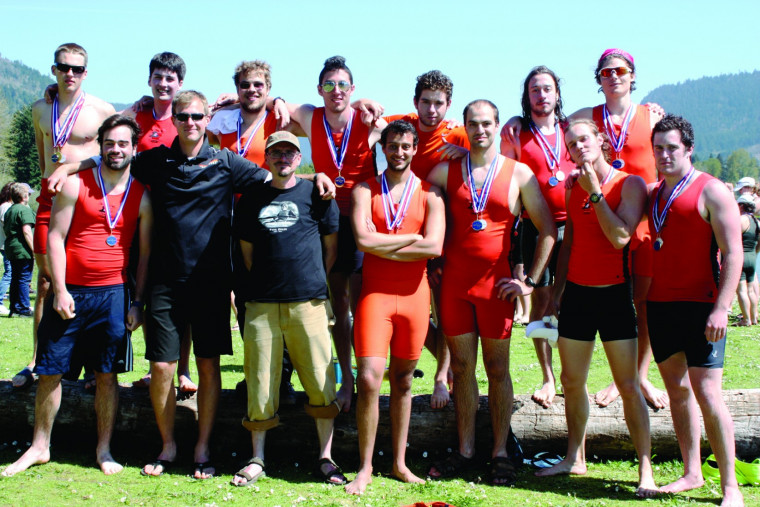Men’s Crew: All in the Same Boat
Open gallery

Portland at 5 a.m. in early spring might as well be the middle of the night. The few awake are likely new parents, bread bakers, night shift workers headed home to bed—and members of Pioneer Men’s Crew, en route to a 5:30 a.m. practice.
As Luke Epain BA ’12, remembers, “It takes a lot of willpower to get up in the morning and do a tough workout. But even in the rain, you keep rowing. And then some mornings, you’re on the water, and it’s beautiful: the sun is rising, there’s a slight mist, a little fog. No one else is up except for you and your teammates.”
For Lewis & Clark men’s crew, practice makes proficient. Epain was one of the leaders of a team that placed second in the 2012 Northwest Collegiate Rowing Conference Championships and took first place in 2011 and 2010.
The team rows in several different boat configurations: eights, fours, and pairs, which indicate the number of rowers in each. In a regatta, the outcomes of the individual races determine each team’s rank. At the 2012 championships, the men’s varsity four, second varsity four, and pair all won their races.
Head crew coach Sam Taylor attributes the Pioneer men’s crew success to their cohesiveness and determination. “They set high expectations for themselves,” he says.
Success comes from the entire team; rowing doesn’t accommodate any prima donnas. A boat must move as a single unit, strong and in sync. “In rowing, no one is more important than anyone else. Each athlete is required to contribute to the ultimate success of the team,” Taylor says.
Taylor estimates about a third of the team is recruited each season and the remainder are novices, new to rowing. Epain says, “Upperclassmen teach new teammates how to be fast rowers. Rowing is an endurance sport; it can take a lot of work before you see the results come through.”
This attitude gets carried over to life outside rowing. When practices run from 5:30 a.m. to 7:30 a.m. most weekdays, students must manage their time accordingly—especially at an academically demanding school like Lewis & Clark. “Rowing forced me to balance and plan out my semester; when I had a big race, I knew I’d have to get work done before that,” Epain says.
Clark Yeager, director of physical education and athletics, admires the rowing team’s hard work and commitment. “If you’re the only one who cares about showing up to practice at 5:30 a.m., you’ll be lonely. You do it because the others on your team are doing it, and you don’t want to let them down. Our students will find there are very few work environments where that’s not important.”
Yeager also credits the coaching Taylor provides. “Sam is a good developer of skills and trainer of student athletes. He makes it interesting for novices to join the team.”
Continuity of coaching makes a successful athletic program, Yeager adds. “A coach who has been here consistently gets to know students for their four full years and can establish a team culture.”
Taylor has headed up crew since 2005 and looks forward to the upcoming season’s possibilities. “We’ve graduated three seniors who contributed a tremendous amount of leadership over their four years. We have some excellent recruits coming in next year, and I’m excited to work with the rising novices from last spring. This year’s team will reinvent itself and decide what it wants its legacy to be.”
—by Carin Moonin
More L&C Magazine Stories
Lewis & Clark Magazine is located in McAfee on the Undergraduate Campus.
MSC: 19
email magazine@lclark.edu
voice 503-768-7970
fax 503-768-7969
The L&C Magazine staff welcomes letters and emails from readers about topics covered in the magazine. Correspondence must include your name and location and may be edited.
Lewis & Clark Magazine
Lewis & Clark
615 S. Palatine Hill Road MSC 19
Portland OR 97219

